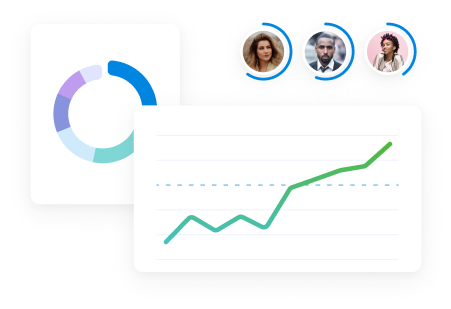As Scoro makes the transition to a 4-day workweek, we’ve identified seven key focus areas in order to optimize our existing processes. In this post, we’re taking a closer look at Focus.
With the 4-day workweek cutting eight hours out of our employees’ schedule, being able to better focus during working hours will be key. With this in mind, we’ve introduced new frameworks to optimize focus and to help staff achieve a ‘flow state’.
Optimizing focus for enhanced productivity
A recent survey reveals that 70% of workers admit they feel distracted at work – a sobering statistic that highlights just how endemic a lack of focus is in the workplace. Achieving a state of efficiency and productivity is key for every business, but for those embarking on a 4-day workweek – such as Scoro – this is even more important.
Outlining our objectives
According to Parkinson’s Law, ‘work expands so as to fill the time available for its completion.’ This is the foundation that the 4-day workweek is built on – the premise that cutting employee hours reduces procrastination and gets the team working as efficiently as possible. And though a shorter work model does inherently push teams ‘into gear’, it’s also important that we optimize existing processes to achieve the optimum level of focus before we transition. With this in mind, we’ve drawn up a set of objectives to help fine-tune our focus and pave the way for a ‘next-steps’ strategy. Every squad has focus areas to optimize. We aim to get as much employee input as possible to ensure we’re creating initiatives and frameworks that actually have an impact. Based on the feedback, our objectives are to:
- Maximize the amount of time employees spend in ‘deep work state’
- Prioritize tasks that bring the most value or are time-sensitive
- Reduce context-switching
- Develop a system for improved planning and execution of tasks (i.e. be more proactive and less reactive).
Our roadmap to success
To help us achieve our focus objectives, we have created our roadmap to success. This includes:
- Automating manual tasks: Using our own Work Management Software to automate routine tasks and free up time to focus on activities that bring the most value.
- Leveraging time management tools: Using our own Kanban task board, timesheets, and utilization reports to assist in effective time management and project management.
- Streamlining meetings: Cutting back on unnecessary meetings that impact focus time by introducing pre-meeting agendas, meeting-free days, and more async communications.
- Communicating expectations: Defining expectations around communications that are urgent vs. those that don’t need an immediate response.
- Implementing quiet hours: Carving out dedicated ‘quiet time’ (blocking all meetings and async communications) so employees can perform at least 120 minutes of deep work a day
- Promoting anti-procrastination techniques: Exploring techniques to harness productivity and increase focus (e.g., Eisenhower Matrix, Kanban Method, and Pomodoro technique).
- Setting quarterly and weekly goals: Setting out clear company goals for the entire team to ensure we stay on track.
- Communicating the importance of daily goal-setting: Encouraging employees to set daily goals in order of importance and priority. Making sure these goals are realistic and manageable.
Measuring progress
In order to gauge our progress and the impact of the new initiatives, we need to measure outputs. This will give us an overview of how our employees are responding and whether focus levels are improving.
We will measure our progress through:
- Time-trackers and shared calendars: Regularly analyzing data from time-trackers and shared calendars to calculate the deep work time of employees (any tasks that hit the 60-minute mark are considered ‘deep work’)
- Shared calendars: Regularly analyzing data from shared calendars to calculate the level of priorities alignment across the company (a calendar filled with multiple unrelated tasks is an indicator that the level of conflicting priorities has increased).
- Monitoring the progress of our OKRs to make sure we are working towards achieving our goals.
- Gantt charts: Regularly analyzing data from Gantt charts to calculate the amount of uninterrupted focus time that employees experience.
- Staff surveys: Gathering feedback from employees on their experiences with deep work and what they think about current ‘focus’ initiatives and policies.
Preparing for challenges
The success of our ‘focus’ initiative ultimately hinges on our ability to adapt. For instance, it may take time for some staff to break out of habits such as reacting to urgent tasks over important tasks, or context-switching. But we’re confident we’ll be able to tackle these challenges, by working as a team to better identify priorities and understand what brings the most value. By supporting our employees with productivity techniques and blocking out time for ‘deep work,’ we will be able to make the transition to a 4-day work week as smooth as possible.
We will continue to share updates on the progress of our focus squad as we transition into a 4-day work week.




